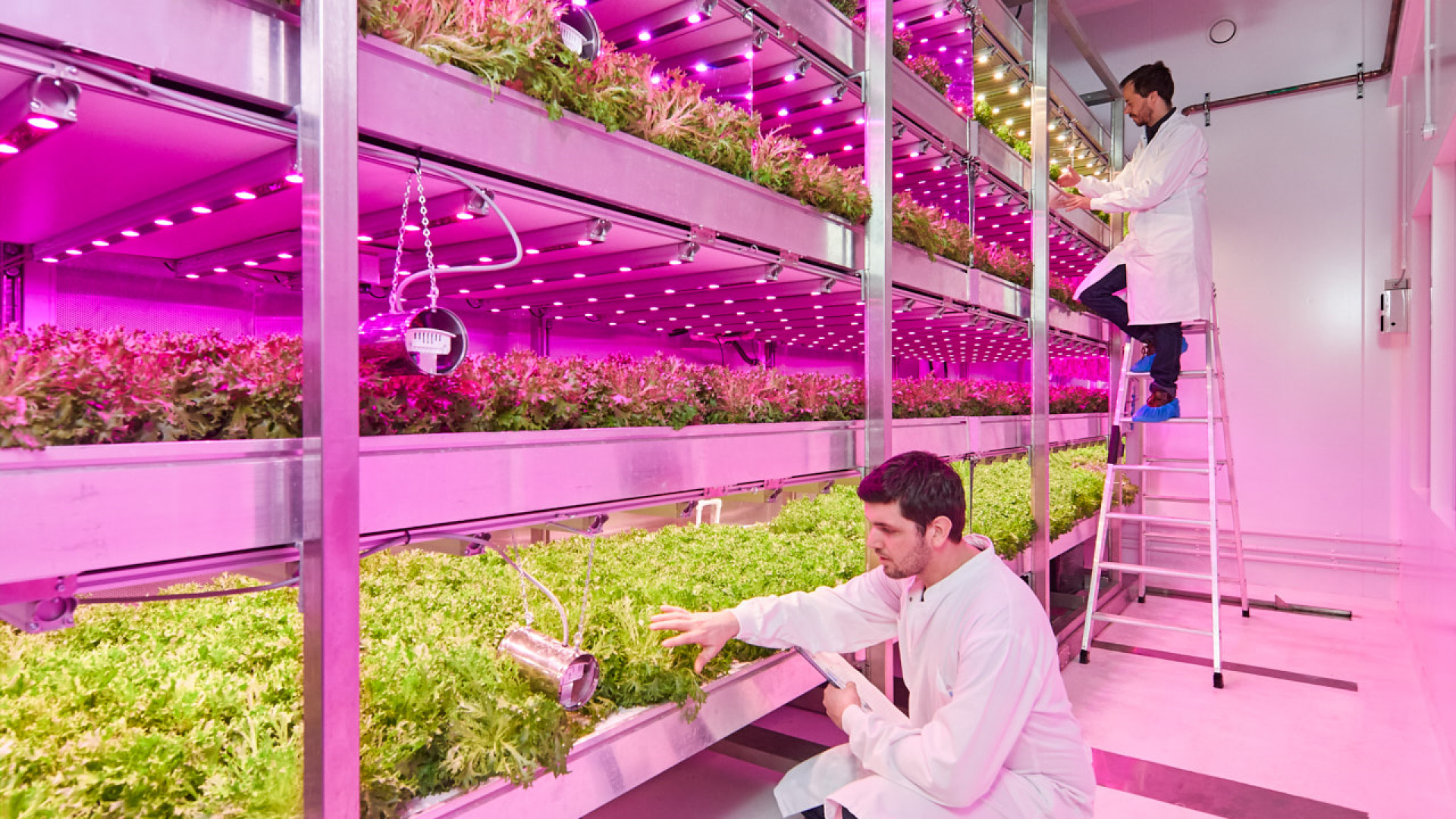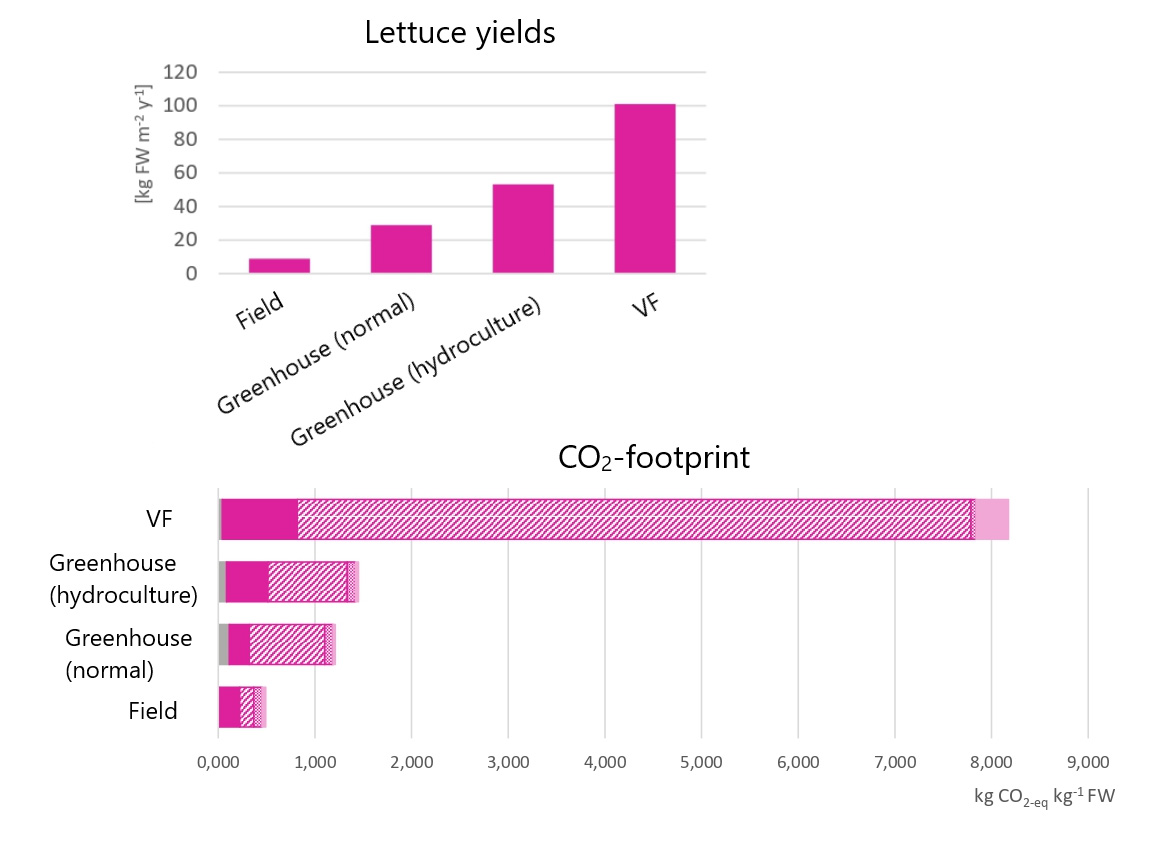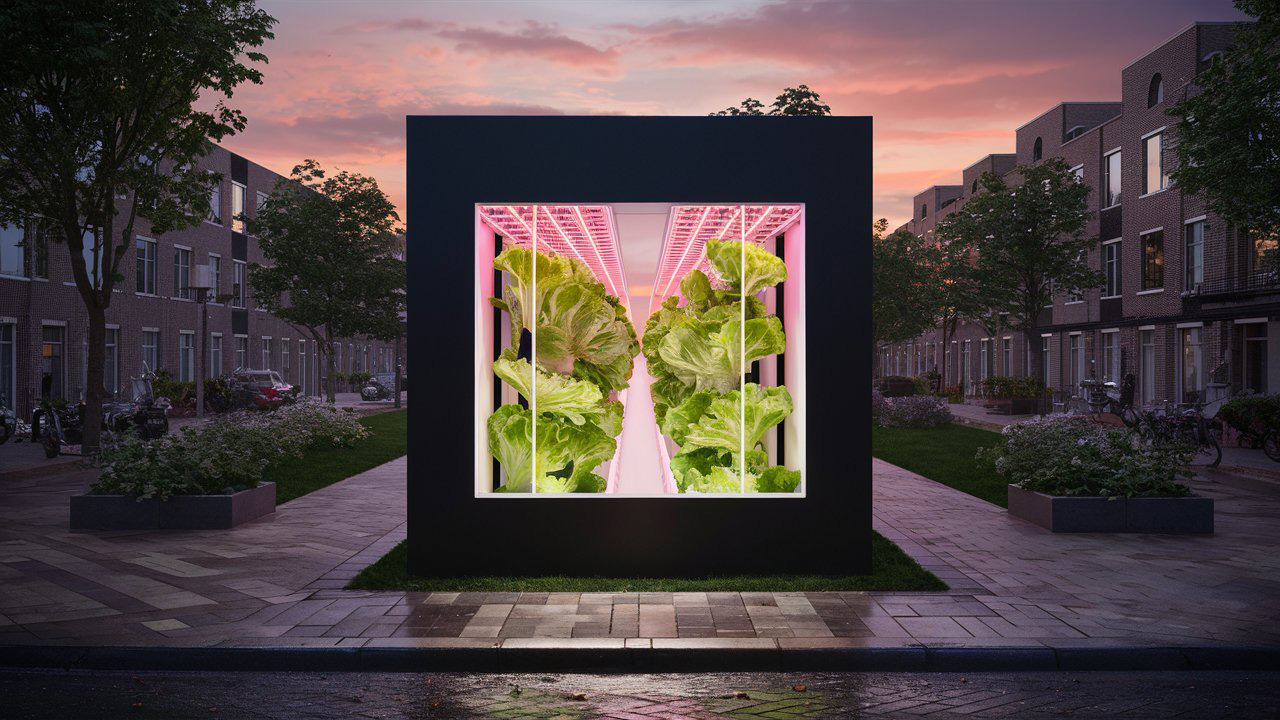"When I started, I knew little about Vertical Farms. My expertise was in energy transition and sustainability. As it turns out, my research mainly looked at: what enters the Farm, such as electricity and nutrients, and what comes out, such as lettuce and heat." Tess Blom is completing her PhD on the integration of Vertical Farms (VFs) with Dutch energy systems. Within her consortium, she sometimes felt like the odd one out: "The others were mainly researching crops. But when the energy crisis started, existing VFs struggled to stay afloat. That's when my work turned out to be quite relevant!"
Tess started at our faculty in 2011 as an undergraduate, and since then gained extensive experience in sustainability. Her master's thesis described opportunities for Delft's energy transition. After that, she spent over two years doing research with Andy van de Dobbelsteen: "I studied the campus’ carbon footprint and how we could reduce it. For example, how much would it matter if we made all canteens vegetarian?" Tess didn't actually think she would ever do a PhD, but then the SkyHigh project came along. She found herself, in her words, 'enrolled almost by accident'.
Lettuce with a hefty electricity bill
"When I started, I knew little about Vertical Farms. My expertise was in energy transition and sustainability. As it turns out, my research mainly looked at: what enters the Farm, such as electricity and nutrients, and what comes out, such as lettuce and heat." Tess Blom is completing her PhD on the integration of Vertical Farms (VFs) with Dutch energy systems. Within her consortium, she sometimes felt like the odd one out: "The others were mainly researching crops. But when the energy crisis started, existing VFs struggled to stay afloat. That's when my work turned out to be quite relevant!"
Tess started at our faculty in 2011 as an undergraduate, and since then gained extensive experience in sustainability. Her master's thesis described opportunities for Delft's energy transition. After that, she spent over two years doing research with Andy van de Dobbelsteen: "I studied the campus’ carbon footprint and how we could reduce it. For example, how much would it matter if we made all canteens vegetarian?" Tess didn't actually think she would ever do a PhD, but then the SkyHigh project came along. She found herself, in her words, 'enrolled almost by accident'.
There are only a few operational VFs in the Netherlands. Fortunately, I also got data from test sites in universities.
Tess Blom
As a first step, Tess compared the current carbon footprint of lettuce from VFs with those from greenhouses and fields. ‘In doing so, we included everything. For example, the necessary construction for the operation, the energy, water, and nutrient consumption, transport, and even packaging." The focus was on lettuce because it has the most data available. Lettuce needs little space and grows quickly, which makes it very suitable for VFs. Still, Tess had to do some searching: “There are only a few operational VFs in the Netherlands, and just one of them wanted to share its data. Fortunately, I was also able to use data from pilot plants in universities." The conclusion: lettuce from VFs currently causes much more CO2 emissions, mainly because of high electricity consumption.
An indoor pool on lettuce heat
Can we integrate VFs into the city, cleverly using their residual heat for other purposes? To this end, Tess first looked at the scale of individual buildings. "Swimming pools turned out to be the best match! After all, they need heat all year round." Other options include apartements, offices, and restaurants, with the latter being able to immediately use the harvest. Their demand for heat is seasonal, though, so these integrations would work best in combination with heat and cold storage. "For example, by installing a ground-coupled heat exchanger connected to underground reservoirs. Fortunately, Dutch soil is well suited for such reservoirs."
Integrating Vertical Farms in the city would work best if we can store heat and cold underground. Fortunately, the Dutch subterranean is very suitable for this.
Tess Blom
Finally, Tess zoomed out to the scale of urban areas. “I did a case study, an Amsterdam neighbourhood from the 1930s. Could a VF produce enough residual heat to supply the whole neighbourhood?" She calculated the neighbourhood's demand as the difference between the total production of cold (e.g. from apartements) and heat (e.g. from supermarkets). The conclusion: “A single VF cannot close that gap, but the residual heat can certainly contribute if we want to decouple the neighbourhood from natural gas.” Tess furthermore suggests that VFs could respond to fluctuations in the power supply by brightening the lights when there is a surplus and dimming them when there is a shortage. “Currently, plant experts are looking into whether crops can handle such fluctuations. Initial results seem positive."
Closer to the equator
In conclusion, we can build VFs in combination with indoor swimming pools, use their residual heat to keep cities warm, and minimise the length of transport chains. Tess: "All of this adds to their efficiency, but VFs would still need twice as much electricity as greenhouses. Not surprising, since the latter have a huge technological lead." At present, she primarily sees applications for VFs outside the Netherlands. "Places with little water, limited space, lots of solar energy. Singapore, for example, or the Gulf states." But there is a final consideration: ‘If in the future we want to pursue far-reaching nature restoration, you could still consider replacing sprawling fields and greenhouses with more compact Vertical Farms."
Published: July 2024
More information
- Tess defends her PhD thesis on 1 November 2024 at 12:30pm.
- The images of existing VFs are owned by Philips Horticulture LED solution by Signify. The graphics were created by and are owned by Tess Blom. The image of a VF in a Dutch neighbourhood was generated with AI.
- The project that included Tess' PhD, SkyHigh, has its own website.
- Tess has already written several papers based on her research. For example, on the total CO2 emissions of lettuce according to production method, the integration of VFs in different buildings, and the integration of a VF in heat and electricity networks.




